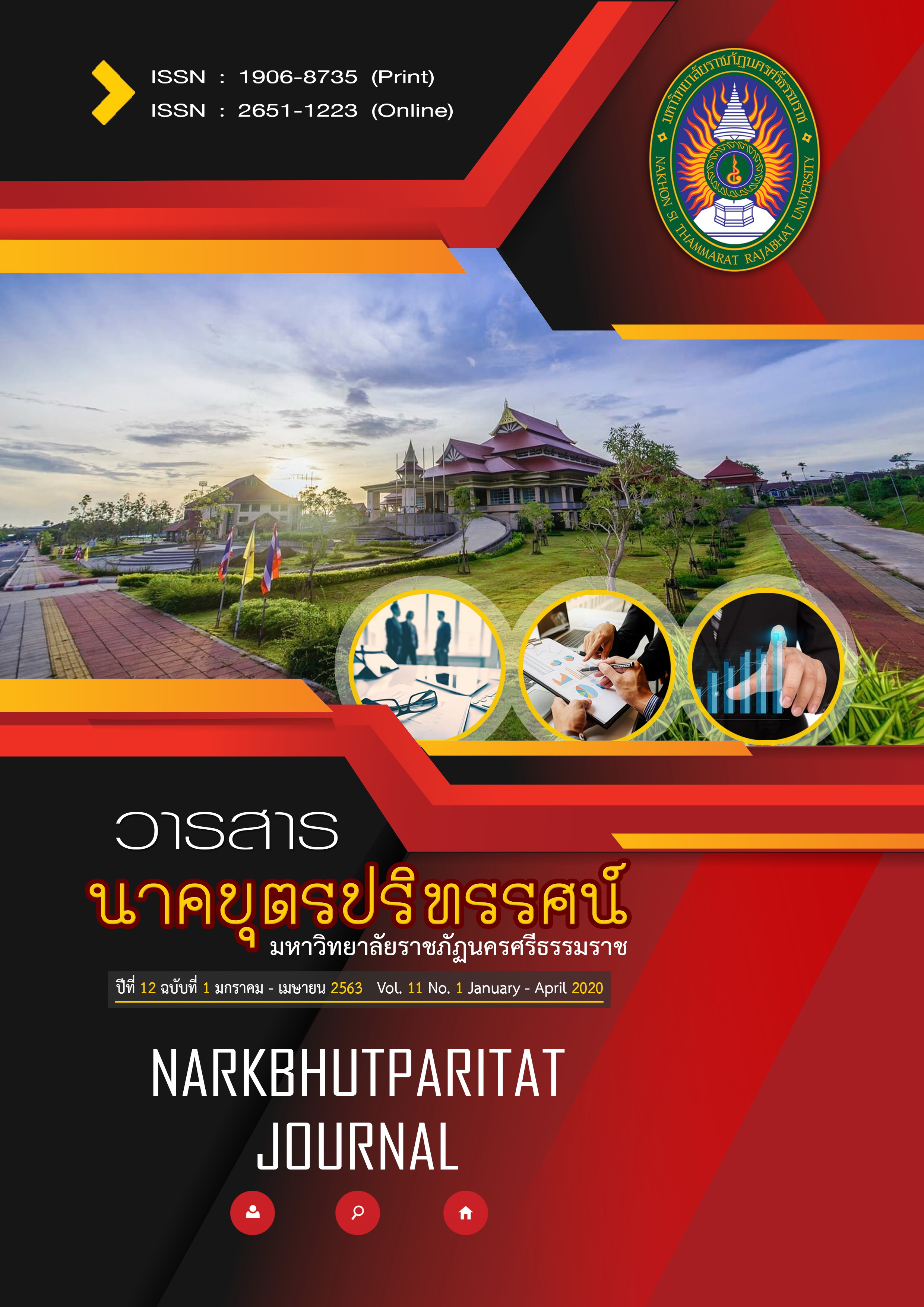กระดิ่ง : พัฒนาการจากความเชื่อและศรัทธา สู่การแสดงสร้างสรรค์ “ระบำกระดิ่งสายพุทธชน” Development from Belief and Faith to the Creative Show “Buddhist Bell Dance”
Main Article Content
Abstract
The purposes of this research were: 1) to create a performance based on knowledge of a bell to identify belief and faith of Buddhist in Nakhon Si Thammarat 2) to support the creativity by using ideal and way of life of Buddhist in Nakhon Si Thammarat. Rabum Kradingsai Buddhachon or Bell Dance was created by the principle of performing arts and can be considered in quality. This performance had been completed in document and CD and be able to be published in the next chance. The processes of this performance were started from studying literature review with reliable sources and interviewed the professor in term of structure and creativity. Krading or bell was the belief about the merit of people who were living around Wat Phra Mahathat Woramahawihan and sermon hall with 2 kinds of the bells; the percussion and the windy bell. The researcher chose the windy bell to develop as a performance instrument in the character of Krading Sai (bell cord). The components of this performance were; all of the performers must be beautiful, physical well- being and talented. The music was made from Southern musical instruments; bagpipe, alto fiddle, Moang, Tub, small cymbals, and composed with Pleng Bhok, Pleng Namo, Pleng Sarana, Pleng Chittaphirom, and Pleng Udompakdee. This performance used Krading Sai (bell cord) which was created from Norah bead and decorated with the bell as a performance instrument. The dance was created from dramatic arts theory, dance terminology and body language for the song. There were 3 dances in Pleng Bhok, 1 dance in Pleng Namo, 10 dances in Pleng Sarana, 6 dances in Pleng Chittaphirom, and 19 dances in Pleng Udompakdee. This performance showed the satisfaction of the audience as following; 4.70% claimed that it benefited for dramatic arts, 4.67% / 4.69% claimed that it was reliable and acceptable in the national/international stage, 4.65% claimed that it was an original academic and produced new knowledge, 4.62% claimed that it was able to be reference and practice, and 4.49% claimed that it had a clear idea for every queries in high and highest level. Rabum Kradingsai Buddhachon or Bell Dance appropriates for being as a creative performance to support the belief and the value of culture
Article Details
References
Anantariyakun, A. (2007). Buddhism spread in Nakhon Si Thammarat province. Retrieved 2018, September 20, from https://www.ntbdays.com/16492
Dailynews. (2017). Chimes auspicious bells. Retrieved 2018, September 20, from https:// www.dailynews. co.th/article/208215
Khempila, P., Pinitpon, S. and Supatraiworapong, P. (2017). Activities- based learning to create Isarn traditional dancing style. Retrieved 2018, September 20, from https://www.tci thaijo.org/index.php.
Kromthai, S. (2012). Religion and beliefs. Retrieved 2018, September 20, from https://saranukromthai. or.th/
Laomanacharoen, S. (2017). "Bell" of King Ramkhamhaeng. Retrieved 2018, September 20, from https://www.matichonweekly.com/column/article_78551
Pholpikul, N. (2017). The Creative Dancing of “Khao-Khong-Phor” in The 9th Dao-Rung Look- Thung Naresuan Contest. Retrieved 2018, September 20, from https://huso.vru.ac.th/mis/ upload/teacher/files/master-216-1521090262.pdf
Phra Kru Hemjetiyanurak. (2017). Interview, September 28, 2017
Phra Kru Janya Suttiyano. (2015). Faith Belief. Retrieved 2018, September 20, from https://www.dhammaster. com/th/index.php?option=com
Phra Maha Virat Temasirom. (2017). Interview, September 28, 2017
Thongsamak, S. (2007). Jatukarmramathep. Bangkok: K.Polpim (1996). (in Thai)
The Royal Institute of Thailand. (2011). The Royal Institute Dictionary, 2011, in honor His Majesty the King on the occasion of the auspicious occasion of His Majesty's 7th Birthday Anniversary 5 December 2011. Bangkok: Siri Wattana Interprint. (in Thai)


